Indian vegetables, whether native or imported, are essential to Indian cooking. They come in all shapes, sizes, and flavors, from bitter to sweet. You’ll find leafy greens, root veggies, legumes, and gourds, each bringing a unique taste, from tangy to sweet.
These veggies are incredibly versatile, used in curries, stir-fries, salads, pickles, and soups. Some even find their way into stuffed dishes or savory snacks.
Certain vegetables are closely tied to regional cuisines. Bitter gourd, for instance, is a favorite in South Indian dishes, while mustard greens are a staple in Punjabi meals.
Cooking methods for these Indian vegetables vary – boiling, frying, steaming, roasting, and sautéing are all popular. Spices and herbs often enhance the flavors, making these vegetables a vital part of Indian cuisine.
In this read, you can explore common Indian vegetables and their unique features. Stay till the end to discover the key characteristics of vegetables from different regions of India—North, South, East, Northeast, and West.
Let’s jump in!
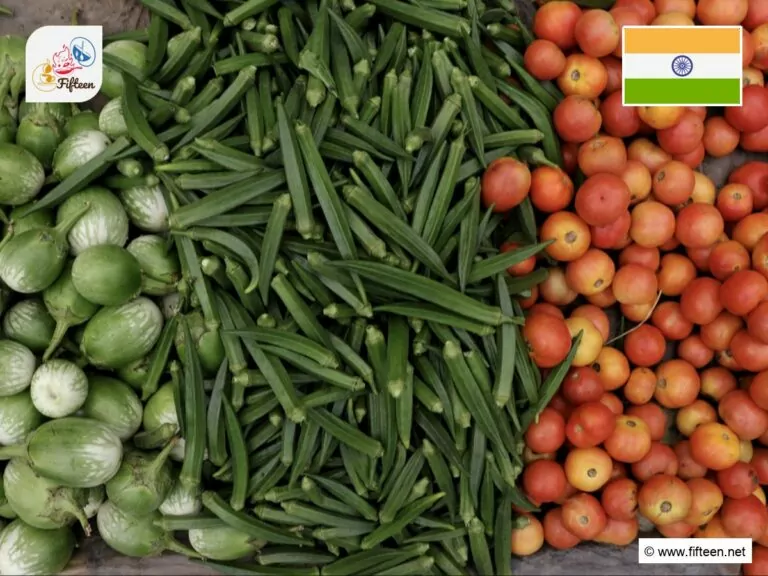
25 Best Indian Vegetables Used in Cooking
Below are 25 of the most common Indian vegetables used in this cuisine, with both English and Indian names. Use the filter function for a smoother reading experience and to find exactly what you’re looking for.
Potato
- For Dishes
- Non Native
Potato, known as aloo in India, is a versatile vegetable native to the Andes region of South America. It’s a staple in many cuisines, including Indian, with shapes ranging from round to oblong and skin colors from brown to red.
The inside flesh, typically white or yellow, becomes soft and fluffy when cooked, easily absorbing spices and flavors. In India, potatoes are used in a variety of dishes like aloo gobi, samosas, pakoras, and aloo paratha, complementing both vegetarian and non-vegetarian meals.
Tomato
- For Dishes
- For Garnishes
- Non Native
Tomato, or tamatar in India, is a crucial fruit vegetable in Indian cuisine. Originally from western South America, tomatoes are now widely grown in India and are typically round with a vibrant red color.
They offer a slightly sweet and tangy flavor, which intensifies with cooking, making them essential in dishes like butter chicken, paneer butter masala, and rasam. Fresh tomatoes are also popular in salads, as garnishes, and in beverages like tomato juice.
Onion
- For Dishes
- Non Native
Onion, or pyaz in India, is a vital vegetable in Indian cuisine, native to central Asia. Available in white, yellow, or red, onions can be round or oval, with a sharp taste that mellows and sweetens when cooked.
They form the base of many dishes, adding depth to gravies, curries, and sauces. Onions can be sautéed, fried, caramelized, or eaten raw, featured in dishes like Onion Bhaji, Biryani, and various curries, making them indispensable in Indian kitchens.
Carrot
- For Dishes
- For Garnishes
- Non Native
Carrot, known as gajar in India, is a vibrant root vegetable native to Persia, now widely grown in India. Typically bright orange, carrots can also be purple, red, yellow, or white, offering a sweet and slightly earthy flavor.
They are versatile, used in salads, curries like Gajar Matar, soups, and sweets such as Gajar Ka Halwa. Carrots are also popular in pickles and beverages like carrot juice, making them a beloved choice in Indian cuisine for both savory and sweet dishes.
Cauliflower
- For Dishes
- Non Native
Cauliflower, known as gobhi in India, is a vegetable originally from the Mediterranean. It has a dense white head surrounded by green leaves, with a mild, nutty flavor that softens when cooked.
In Indian cuisine, cauliflower is essential in dishes like Aloo Gobi, Gobi Manchurian, and Gobi Paratha, thanks to its ability to absorb spices well. Whether roasted, sautéed, steamed, or raw, it provides flavor and nutritional benefits like fiber and vitamins.
Eggplant
- Exotic
- For Dishes
- Non Native
Eggplant, called brinjal or baingan in India, has a rich history in Indian cuisine and comes in various shapes and colors, typically deep purple. With a spongy texture that becomes creamy when cooked, eggplant has a mild, slightly bitter taste that mellows with heat.
Popular in dishes like Baingan Bharta and stuffed brinjal, eggplant is also used in stews, curries, and fried dishes. Its capacity to soak up flavors makes it a favorite in richly spiced recipes.
Cabbage
- For Dishes
- Non Native
Cabbage, or patta gobhi in India, is a versatile vegetable native to Europe but widely used in Indian cuisine. It comes in tight, leafy heads of green, purple, or white, with crunchy raw leaves that become tender when cooked.
Cabbage is often shredded and incorporated into stir-fries, curries, and salads, enhancing dishes like Cabbage Poriyal and Cabbage Pakora with its slightly peppery taste. Sautéed with spices like mustard seeds, cumin, and turmeric, it pairs well with peas and carrots, offering a healthy dose of vitamins and fiber.
Garlic
- For Dishes
- Non Native
Garlic, known as lahsun in India, is an aromatic vegetable essential to Indian cooking. Originating from Central Asia, garlic bulbs consist of individual cloves with a strong, sharp taste when raw that turns sweet and mellow when cooked.
Minced or crushed, garlic is often sautéed with onions and ginger to form the base of many curries and gravies, adding depth and flavor. It is also used in pickles, chutneys, and as a seasoning in various dishes.
Green Chili
- For Dishes
- For Garnishes
- Non Native
Green chili, or hari mirch in India, is a fiery staple in Indian cuisine, native to Central and South America. These slender, vibrant green chilies have a sharp, spicy taste that intensifies when cooked.
They add heat and flavor to curries, stir-fries, pickles, and chutneys, and are sometimes eaten raw for those who love intense heat. Green chilies can be chopped into dishes like Palak Paneer or used whole to infuse oils and temper dals.
Green Pea
- For Dishes
- Non Native
Green pea, known as matar in India, is a beloved vegetable believed to have originated from the Middle East. These small, bright green peas have a sweet, slightly starchy taste and tender texture when cooked.
In Indian cuisine, they are essential in dishes like Aloo Matar, Matar Paneer, and Matar Pulao. Green peas can be used fresh, frozen, or dried, making them a versatile ingredient in soups, stews, and stuffed breads.
Spinach
- For Dishes
- Non Native
Spinach, or palak in India, is a leafy green vegetable native to Persia, now widely grown worldwide. It has broad, dark green leaves with a slightly bitter taste that becomes earthy when cooked.
Spinach is highly versatile, used in dishes like Saag Paneer, Palak Dal, and Palak Paratha, and can be added to smoothies for extra nutrients.
Bell Pepper
- For Dishes
- For Garnishes
- Non Native
Bell pepper, known as shimla mirch in India, adds color and crunch to many dishes. Originally from Central and South America, these peppers adapt to the climate of India. They come in green, red, yellow, and orange, each with a unique flavor.
Green peppers are slightly bitter, while the other colors are sweeter. Used in dishes like Aloo Capsicum and Capsicum Bhaji, bell peppers are also great in salads, chutneys, and as pizza and sandwich toppings.
Cucumber
- For Dishes
- For Garnishes
- Non Native
Cucumbers, or kheera as known in India, offer refreshing crunch and hydrating qualities, making them a staple in both raw and cooked dishes.
Their cylindrical, dark green bodies house crisp, pale green flesh with a subtly sweet taste, perfect for enhancing salads, such as the vibrant Indian Kachumber, or transforming into pickles and refreshing drinks like cucumber lemonade.
Not only do cucumbers add a burst of freshness to meals, but they also support hydration due to their high water content, positioning them as a healthful choice for any diet.
Corn
- For Dishes
- Non Native
Corn, or makai in India, has woven its way into the fabric of various cuisines worldwide, originating from Central America and now favored in India, among many other places.
Whether savored fresh off the cob, roasted, or incorporated into dishes, corn’s sweet, starchy kernels bring joy to the table.
It’s also a key ingredient in Makki ki Roti, a northern Indian cornmeal flatbread, showcasing corn’s adaptability in both savory and sweet contexts and its beloved status in culinary traditions around the globe.
Ginger
- For Beverages
- For Dishes
- Non Native
Ginger, or adrak in India, holds a treasured spot in Indian kitchens with its robust, spicy-sweet flavor that becomes more pronounced upon cooking.
Native to Southeast Asia, this knobby spice is utilized in its fresh form, often minced or grated into curries and teas like the aromatic masala chai.
Whether in savory dishes or sweet treats like ginger halwa, ginger infuses meals with a warming essence, making it a cornerstone in traditional and modern recipes.
Green Onion
- For Dishes
- For Garnishes
- Non Native
Green onion, also known as spring onion or hare pyaz in India, brings a unique dual-flavor profile to diverse cuisines. These slender stalks, native to Central Asia, combine the mild sweetness of their green tops with the potent, onion-like sharpness of their white bulbs.
Integral to dishes from salads to stir-fries, green onions enhance recipes with crisp texture and fresh taste. They are particularly prominent in Indian and Indo-Chinese cooking, adding depth to everything from spring onion curries to staples like fried rice and chow mein, without overwhelming the dish’s flavors.
Mushroom
- Exotic
- For Dishes
- Non Native
Mushrooms, known as khumb in India, have become a vital part of Indian cuisine, despite not being native. Available in various shapes and sizes, mushrooms have a smooth, firm texture and a rich, earthy flavor that deepens upon cooking.
They are featured in a range of dishes, from mushroom masala to aloo mushroom curry and mushroom pulao, often sautéed or roasted.
Sweet Potato
- Exotic
- For Dishes
- Non Native
Sweet potato, or shakarkandi (Indian), has made its mark in Indian cooking with its inherent sweetness. Characterized by its creamy texture when cooked and rich in fiber, vitamins A and C, and potassium, sweet potatoes offer a nutritious boost to savory favorites and sweet treats.
Originating from Central and South America, this root vegetable appears in numerous Indian recipes, from savory Sweet Potato Curry to Sweet Potato Chaat and even sweet dishes like sweet potato halwa.
Radish
- For Dishes
- For Garnishes
- Non Native
Radish, also known as mooli in India, is a crisp and pungent root vegetable. Native to Southeast Asia, radishes come in various shapes and colors, from elongated white daikon to round red radishes.
They taste peppery when raw, which becomes milder and slightly sweet when cooked. Radishes are a common ingredient in Indian cuisine, used in dishes such as mooli paratha (stuffed flatbread), mooli ki sabzi (radish curry), and salads.
They can also be pickled to make achar or added to sambar for a tangy flavor. Radishes are also enjoyed raw as a crunchy snack or garnish.
Pumpkin
- For Dishes
- Non Native
Pumpkin, known as kaddu in India, is a nutritious vegetable widely used in cooking. Originally from North America, pumpkins are now grown globally, including in India. They are typically round with a thick, hard rind that can be orange, yellow, or green, and their flesh is sweet and firm.
Pumpkin’s mildly sweet flavor and smooth texture suit savory and sweet dishes. In Indian cuisine, pumpkin is used in various recipes, such as pumpkin sambar (lentil stew), pumpkin sabzi (stir-fry), and pumpkin halwa (a dessert). It is also added to dals, soups, and curries.
Bottle Gourd
- For Dishes
- Non Native
Bottle gourd, also known as lauki, doodhi, or ghiya in India, is a vegetable native to Africa but widely cultivated in India and other parts of Asia. It has a light green, smooth skin and a white, spongy flesh that becomes tender when cooked. The taste is mild and slightly sweet.
Bottle gourd is used in a variety of Indian dishes such as lauki ki sabzi (a simple curry), lauki kofta (fried dumplings in a rich gravy), and lauki chana dal (a lentil dish). It can also be incorporated into soups, stews, and even desserts like Lauki Halwa.
Okra
- For Dishes
- Non Native
Okra, known as bhindi in India, is a popular vegetable commonly used in Indian cuisine. Native to Africa, okra is now extensively grown in warm climates worldwide, including India.
Okra pods are green, slender, and slightly ridged, with a mucilaginous texture that becomes more pronounced when cooked. The flavor is mild and slightly grassy.
Okra is a key ingredient in many Indian dishes such as bhindi masala (spiced okra), bhindi fry (fried okra), and is often included in sambar and other stews. It can be sautéed, fried, or cooked with various spices to create flavorful and healthy dishes.
Bitter Gourd
- Exotic
- For Dishes
- Non Native
Bitter gourd, also known as bitter melon, or karela in India, is a distinctive and nutritious vegetable. Native to tropical and subtropical regions, bitter gourd has a warty exterior and is typically green in color. The taste is bitter, and the texture can range from crunchy when raw to tender when cooked.
Bitter gourd is widely used in South Indian cuisine, particularly for its health benefits. It is often prepared in dishes like karela sabzi (spiced bitter gourd), karela juice, and stuffed karela. Besides being cooked with onions and spices, it is also used in pickles.
Cluster Bean
- For Dishes
- Native
Cluster bean, also known as gawar, guwar, guar, or guvar bean in India, is a legume native to India. They have long, slender pods that are typically green. They have a slightly bitter taste when raw, which becomes more palatable when cooked.
The texture is crisp when fresh but can become fibrous if overripe. Cluster beans are used in various Indian dishes such as cluster bean curry, goan guar beans bhaji, and stir-fries. The beans are also used to produce guar gum, a thickening agent in the food industry.
Green Bean
- For Dishes
- Non Native
Green bean, also known as French bean or snap bean, is a popular vegetable in Indian cuisine. Native to Central and South America, green beans are now cultivated widely in India. They are long, slender, and green with a crisp texture and a mild, sweet flavor.
Green beans are used in numerous Indian dishes such as green bean poriyal (stir-fried beans), green bean curry, and added to mixed vegetable dishes. They are often cooked with spices, onions, and tomatoes.
What Are the Characteristics of Indian Vegetables in Different Regions?
Indian vegetables vary significantly across its regions due to diverse climates, soils, and cultural practices. Here’s an overview of the characteristics of Indian vegetables in different regions, along with examples of common Indian specialties that utilize these vegetables:
In North India, the climate is conducive to growing vegetables such as spinach, cauliflower, peas, and potatoes. The region’s fertile plains, especially in Punjab and Haryana, produce ample leafy greens like fenugreek, mustard greens, and spinach.
Winter vegetables like carrots, radishes, and turnips are also prevalent. The cuisine heavily uses these vegetables in various North Indian dishes like saag (greens), aloo gobi (potatoes and cauliflower), and rajma (kidney beans).
South India’s warm, tropical climate supports the cultivation of many Asian vegetables like okra, eggplant, gourds, and legumes. The coastal areas produce coconut, which is a staple in many dishes.
Drumsticks (Moringa oleifera), curry leaves, and various tubers like yam are commonly used. South Indian delicacies incorporate these vegetables in sambar (a lentil-based stew), upma (breakfast), and various chutneys.
East India’s humid lands, especially in West Bengal and Odisha, are perfect for growing pointed gourd, bitter gourd, pumpkin, and eggplant. Leafy vegetables like spinach and water spinach are common. Mustard oil adds a distinctive flavor to dishes.
Traditional meals include shukto (mixed vegetables), alu posto (potatoes with poppy seeds), and dalma (lentils with vegetables).
Northeast India’s unique climate and terrain support bamboo shoots, squash, and various leafy greens. Indigenous herbs and fermented products enhance the flavors of simple, local dishes.
Common vegetables include mustard greens and fiddlehead ferns, featured in dishes like lai patta (mustard greens) and eromba (fermented fish with vegetables).
Western India, including Maharashtra and Gujarat, grows vegetables such as tomatoes, onions, garlic, and various gourds. The region also produces many legumes and pulses. Coastal areas like Goa include coconuts and seafood in their diet.
Gujarati cuisine, known for its vegetarian dishes, features vegetables like ridge gourd, bottle gourd, and various beans in dishes like undhiyu (mixed vegetable dish) and bharela ringan (stuffed eggplant).
Have you ever tried cooking with Indian vegetables? Share your favorite recipes and experiences in the comments below! And while you’re here, why not explore other fruits and vegetables from different regions on our website?


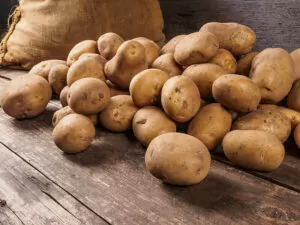
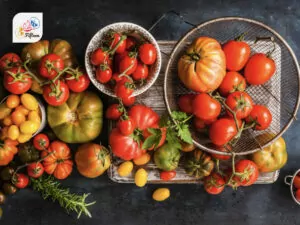
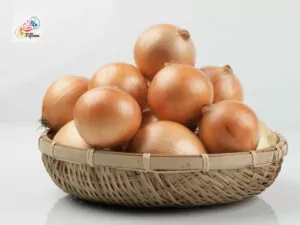
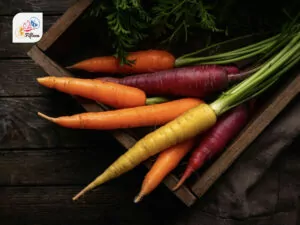
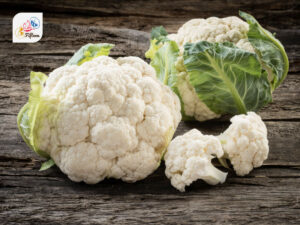
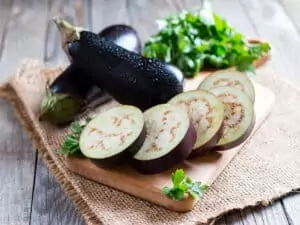
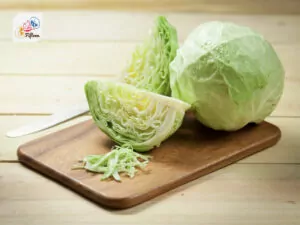
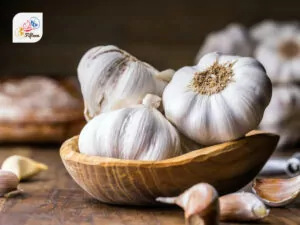
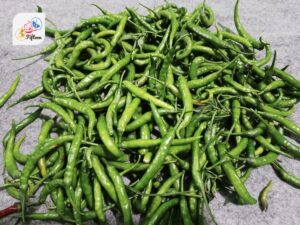
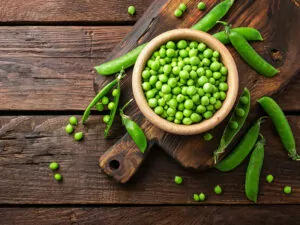
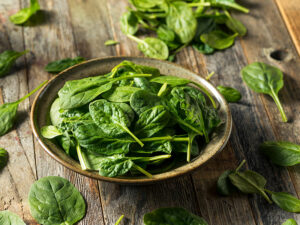

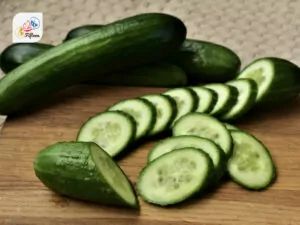
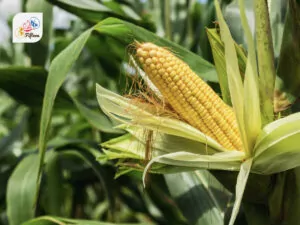
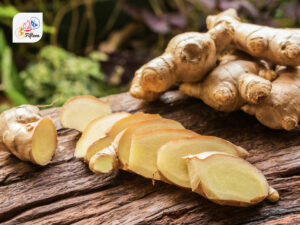
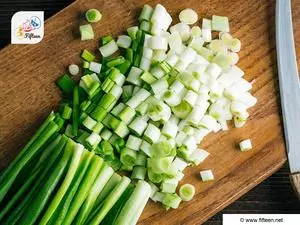
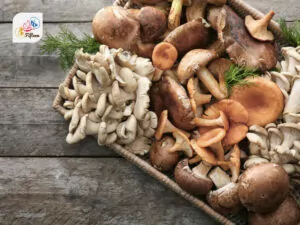
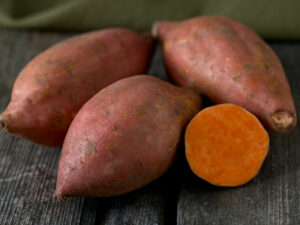
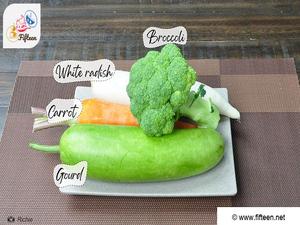
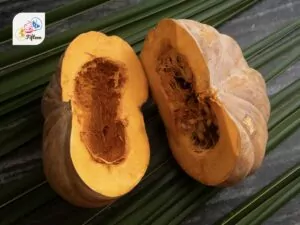
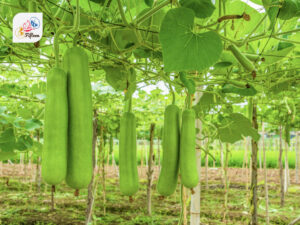
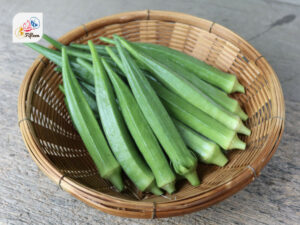
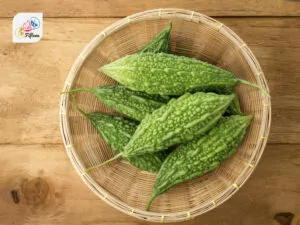
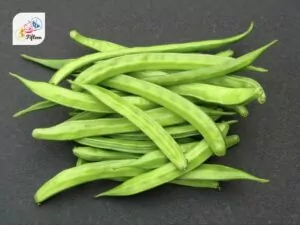
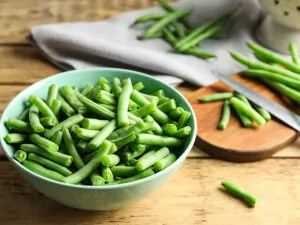
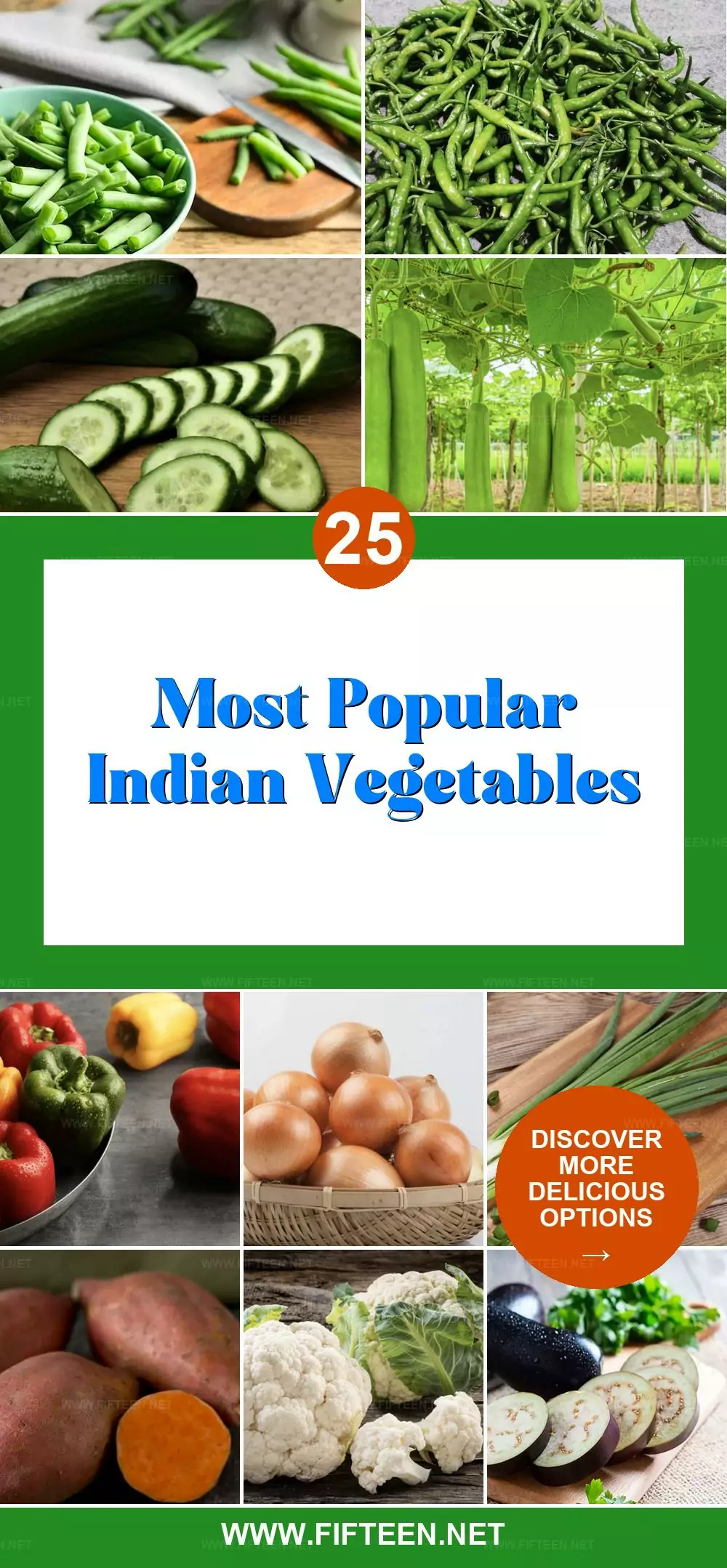
Jamie Scott
Editor in Chief, Senior Content Writer
Expertise
Home Cooking, Meal Planning, Recipe Development, Baking and Pastry, Food Editor, Cooking-video Maker, Western Food Evaluation Expert
Education
Le Cordon Bleu College of Culinary Arts
Local Community College, New York, NY
Jamie Scott is a skilled culinary expert and content creator specializing in Western cuisine. With over 15 years in the culinary field and formal training from Le Cordon Bleu, Paris, Jamie deeply understands how to blend nutrition with delicious flavors. His passion for cooking matches his commitment to making healthy eating accessible and enjoyable.
On Fifteen.net, Jamie brings a fresh perspective to classic dishes and beverages, offering readers insightful recipes, cooking tips, and a fresh view on meal planning that emphasizes taste, health, and simplicity.